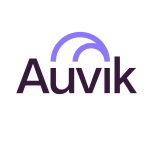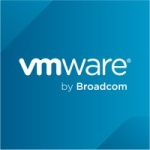What is our primary use case?
It's a dashboarding system. It's good because if you're doing energy management, people like yourself don't pay millions of pounds or dollars just to see your energy usage. That's why all the systems are free. You just log on, and although you have to accept what they provide, it's sufficient.
When you want to get into that type of market, cost is a big driving factor. Then, there are things like Node-RED, which are free. You can go on there and do everything you want: dashboards, even reporting. I can do my bulk reporting through Node-RED, using it as the enterprise version. I suck the data out, customize my reports, and do a bulk run—all free.
How has it helped my organization?
Grafana itself has a number of third-party interfaces, and it depends on which one you choose. It's just a dashboard system. You've got to write your own database access. I found one with an Indian guy in England who's made the interface very simple and easy.
You can write queries and do a lot of stuff that the standard tools can't do because people get data in JSON and XML, and many of these things are very specific and very expensive.
What is most valuable?
I use the charting functions. It's got a very serious charting function. You can pull data in, stack the data, and change colours and shades. The chart plugin is very good, far better than any other charting tool I've seen.
Dashboard management:
Grafana has enough features around dashboard management. It's got enough plugins to create your dashboards. It can automatically create a list if you've got a hundred meters and then automatically do all one hundred and fold them up so you can make very detailed or very compact dashboards with it.
Real-time monitoring:
I do real-time monitoring in the millisecond region, not banking-like real-time. If you're looking at waveforms and stuff like that, there's no product suitable for it. I have to use an embedded system to do the real-time stack and then take the data from there and view it. A lot of these things claim they can stream data in real-time, but nothing can really do it accurately. They can do it approximately.
Security features & data governance:
I've never had a problem with data governance. In terms of security, it runs on your own server. You put your own security on it. If any passwords are on the server, they don't get passed. You don't have to pass them in your API strings. It's very secure in that regard.
I've never had a problem. I've never heard them report any data breaches because they don't hold any data. The data is yours. It's just a middleman. It takes the data from you, displays it, and that's it.
I do know there is a problem. You can create a dashboard for your screen at work, and it will flip over and update. But if you go to the URL, delete it, and go back, it will go back to your original dashboard. So people can have access to your whole dashboard system.
What needs improvement?
In terms of what Grafana provides, it just provides the charting tools. Everything else is third-party. It's like Node-RED. Node-RED is free, and you can choose an application, but that application depends on the person who's supporting it. If they decide not to support it, then you're stuck.
However, I believe that it can't be improved or changed because people have to make money and make a living from it. Nothing will ever be changed. It depends on the software. Same as Windward. Windward just decided it could not support a large number of customers, so it focused on high-income, low-volume clients. Whereas Node-RED has millions of followers and fantastic support, the same as Grafana.
Grafana is partly free, but it's your problem. That's how all these companies work. If you're big and you pay a lot of money, they'll pay attention to you.
Buyer's Guide
Grafana Enterprise Stack
September 2025
Learn what your peers think about Grafana Enterprise Stack. Get advice and tips from experienced pros sharing their opinions. Updated: September 2025.
868,787 professionals have used our research since 2012.
For how long have I used the solution?
I've used it for many years now because it's free for small users.
What do I think about the stability of the solution?
The version control is very good. They have:
- A stable version
- Beta versions
In certain instances, the beta version has fallen down. One problem is that I can't reset it to the earlier version; I have to start again. So, I don't use the beta versions, and I only work with stable versions.
What do I think about the scalability of the solution?
The scalability is your problem because you're accessing your own database. It depends on your database.
I've got a personal database with MS SQL, and it's slow and horrible. But the Postgres, which supports millions of meters, is very quick. So, it depends on your database design with scalability. It's got nothing to do with Grafana.
Grafana is used mostly for very large data centres worldwide. That's why they give it away for free for smaller users. But for enterprise, you're talking about hundreds of thousands of dollars to buy into the system. People like Google use it in their big data centres. A lot of data centre people use it. That's its prime focus.
How are customer service and support?
Grafana has a very good wiki where you can get help. But direct support from them is very limited. They focus on their big customers.
If you're trying to do something left field, they just won't respond to you unless you pay for support.
However, I've never had any support from them. I've never needed support. I've worked with the stable version and used a third party, so any issues I've had were with the third party, not Grafana.
How was the initial setup?
You can just download it and put it on your PC, and it will start running. Then you have to set it up; it has tons of internal settings you can customize. You can also make it more security-enhanced with two-factor authorization.
In terms of scalability, you can take something like that and scale it up for a bigger organization. No problem, because it's got all the features to enable it to do that.
Integration capabilities & third-party tools:
It allows you to access the entire JavaScript. You can take Grafana and embed it in Node-RED, for example, or embed it in other places. They've got all that.
There are lots of tools or third-party tools available, and you have to choose what you want to use. Grafana develops and maintains a limited number of tools, which serve the market they are intended for.
If you want to do something left field or right field, then Grafana, Microsoft, or any of these things are not something that you go for unless you do it yourself.
What about the implementation team?
What was our ROI?
I don't use it for services or commercial purposes. There's no return on investment because it's not costing us anything. The only investment is our time in programming and setting it up. So for us, it's like a 100% return on investment.
What's my experience with pricing, setup cost, and licensing?
It is open-source for small users. For energy management in any organization, you need more than two or three users. You don't need 20 users. It's not like Windward, where there are a whole lot of people using it.
Grafana Enterprise Stack allows up to three users. If you want more than that, then I think it's 35 dollars a year per user.
What other advice do I have?
If you're just using Grafana as it is and what it's designed for, I would say it's a ten out of ten. There's nothing else like it that I've seen. There are lots of dashboard systems, but not for free and not online, and they don't have all the features that Grafana has.
My advice depends on what people want. For example, I have customers who pay a lot of money for Schneider metering software. I tell them they can get the data out of the SQL database and use Grafana. You can customize it and never have to pay for an upgrade. Those Schneider models, and a lot of people, basically work on the next version. In about three versions, the software has not been compatible with your old databases.
Here, if you've got the old database, you don't have to buy the new system. You still have the same meters in the system. Just use Grafana or Node-RED. It's also free. You just have to learn how to pull the data in and out, and you've got yourself a free system.
Disclosure: My company does not have a business relationship with this vendor other than being a customer.





















